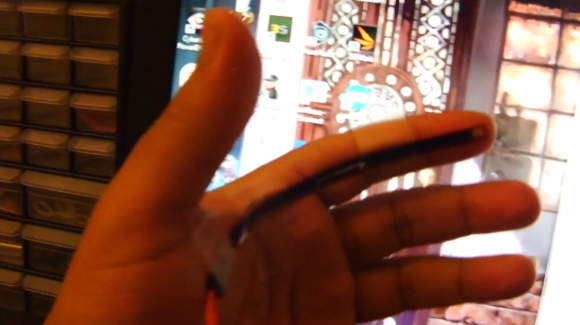
[Cyber] has been testing out intuitive input methods for virtual reality experiences that immerse the user further into the virtual world than archaic devices like a keyboard or mouse would allow. One of his biggest interests so far was the idea of a data glove that interacts with an Arduino Uno to interface with a PC. Since commercial products are yet to exist on a readily available level, [Cyber] decided to build his own.
He started out with a tiny inertial measurement unit called a Pololu MinIMU-9 v2 that tracks orientation of the 3-axis gyro and accelerometer. The USB interface was soldered into place connecting the wires to an Arduino Uno. From there, he hooked up a flex sensor from Spectra Symbol (which were supposedly used in the original Nintendo Power Gloves) and demoed the project by tracking the movement of one of his fingers. As the finger bent, the output printed on the serial monitor changed.
[Cyber] still needs to mount a glove on this system and construct a proper positional tracking method so that physical movement will be mirrored in a simulation.
[Cyber’s] day job has had him busy these last few months, which has forced the project into a temporary hold. Recently though, [Cyber] has been an active member and an influence in the local Orange County VR scene helping to build a nice development culture, so we’re hoping to see more updates from him soon.
To view what he has done up to this point, click the link at the top of the page, and check out the video after the break:














The original Power Gloves were so bad.
These flex resistors aren’t much better. The hysteresis is awful..
I build one of these using accelerometers several years ago for a medical diagnosis project to measure joint angles in the fingers (well, one finger for the first prototype). I should really write it up.. ;)
Building data gloves is fun. This one sounds like a nice homebrew and a great hack.
Companies buy each other all the time, so maybe Spectra Symbol now owns them, but the original flex sensor in the Mattel product was made by Amtec International in Utah. I’ll be interested to try the Spectra stuff and see how it compares.
Spectra Symbol employee here. These were indeed used in the original powerglove. And they indeed do have some significant hysteresis.
Interesting. Did you sell them through Amtec or is there some convoluted connection from over the years? The designers at Mattel gave me Amtec’s info at the time I interviewed them way back when. I’m happy to see the original material is still available because even with the hysteresis, it’s a very cool product.